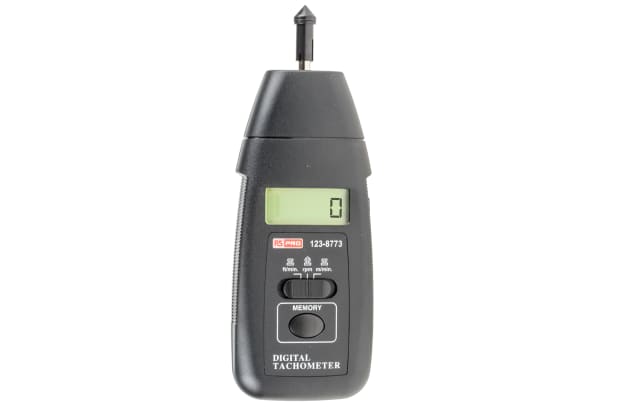Tachometer Basics: Every Little Thing You Required to Know for Accurate Readings
Tachometer Basics: Every Little Thing You Required to Know for Accurate Readings
Blog Article
The Importance of a Tachometer in Monitoring Engine Rate and Efficiency in Automotive Applications
In the realm of automotive engineering, the tachometer stands as a pivotal tool in the vehicle driver's toolbox, providing a direct home window into the inner operations of a car's engine. Past its function as a simple scale of revolutions per min (RPM), the tachometer works as an important device for enthusiasts and experts alike, offering real-time insights right into engine efficiency and health. Comprehending the value of this device goes beyond surface-level monitorings, diving into the complex partnership between engine speed, power outcome, and total driving experience. As we discover the multifaceted function of the tachometer in vehicle applications, a much deeper appreciation for its influence on automobile characteristics and efficiency begins to emerge.
Significance of Keeping An Eye On Engine RPM
Checking engine RPM, or changes per min, is an essential facet of auto upkeep and efficiency examination. Engine RPM straight associates with the speed at which the engine's crankshaft revolves, showing exactly how quickly the engine is running - tachometer. By keeping track of RPM, auto mechanics can examine the health and wellness of the engine, find prospective problems, and fine-tune performance. An abnormal RPM analysis might indicate problems such as engine misfires, faulty trigger plugs, or problems with the fuel delivery system. Continually high RPM analyses might indicate hostile driving routines or the need for a greater equipment shift to improve gas effectiveness.
In addition, keeping an eye on engine RPM is vital for efficiency examination in auto racing and high-performance automobiles. Maintaining optimum RPM levels is vital for achieving peak power result and acceleration. Racers commonly use tachometers to guarantee they are operating within the excellent RPM range for optimum performance. In summary, checking engine RPM is not only essential for discovering concerns however additionally for optimizing engine efficiency in numerous automobile applications.

Benefits of Real-Time Data
In auto applications, real-time data plays a vital role in offering immediate insights right into the efficiency and problem of the vehicle. By continuously keeping an eye on numerous specifications such as engine rate, temperature level, gas intake, and extra, real-time information offers many advantages that add to improved effectiveness and safety and security when driving.
Additionally, real-time data facilitates efficiency optimization by offering immediate comments on driving practices and engine performance. Vehicle drivers can change their behavior in real-time based on this details to achieve far better fuel economic situation and extend the life-span of their automobile.

Moreover, real-time data plays a vital function in modern-day automobile diagnostics, making it possible for service technicians to promptly diagnose and attend to malfunctions. This causes reduced downtime, lower upkeep costs, and eventually, boosted overall automobile integrity and longevity (tachometer). By using the power of real-time data, automobile stakeholders can make enlightened choices that positively affect both the efficiency and long life of the car
Effect On Equipment Shifts
Efficient gear shifts in vehicle applications significantly influence general efficiency and driving experience. The tachometer plays a crucial role in enhancing see post gear changes by giving real-time engine rate information to the chauffeur. When approaching the redline on the tachometer, it indicates the motorist to upshift to avoid over-revving the engine and causing potential damage. On the other hand, downshifting at the best moment can assist preserve the engine in its power band, making sure receptive velocity when required.
Additionally, the tachometer aids in attaining smoother gear transitions, particularly in manual transmissions. By keeping an eye on engine speed, vehicle drivers can execute gear shifts at the optimum RPM array, lowering snagging activities and lessening wear on the transmission components. This accuracy on duty modifications not only enhances driving convenience however also adds to sustain effectiveness.
Enhancing Fuel Performance
Provided the vital role the tachometer plays in maximizing equipment shifts for efficiency and engine health and wellness, it straight adds to maximizing gas effectiveness in automotive applications. By giving real-time comments on engine rate, the tachometer helps chauffeurs in keeping the most efficient RPM variety for fuel economic situation. When chauffeurs consistently check the tachometer and adjust their motoring practices as read here necessary, they can prevent unneeded fuel intake triggered by over-revving or hauling the engine.
Additionally, the tachometer aids drivers identify the most fuel-efficient gear to be in at any type of provided minute, protecting against the engine from working more difficult than required. In final thought, the tachometer offers as a valuable tool in boosting gas performance by advertising optimum driving behaviors and identifying areas for improvement in the vehicle's efficiency.

Optimizing Engine Durability
The tachometer's role in checking engine speed and performance is critical in ensuring the long life of auto engines. By making use of the tachometer effectively, chauffeurs can optimize engine longevity via conscious RPM administration. Regularly revving an engine too expensive can bring about too much deterioration on crucial components, such as the pistons, shutoffs, and bearings. Gradually, this can result in lowered engine efficiency and potential breakdowns. Keeping an eye on the tachometer allows vehicle drivers to remain within the recommended RPM array for their automobile, avoiding unnecessary stress on the engine and extending its life expectancy.

Final Thought
Finally, the tachometer plays a crucial duty in keeping track of engine rate and performance in automotive applications. By giving real-time data on RPM, it enables effective gear changes, improved gas performance, and optimized engine durability. This device is crucial for maintaining optimum engine performance and ensuring the total functionality of a lorry.
Report this page